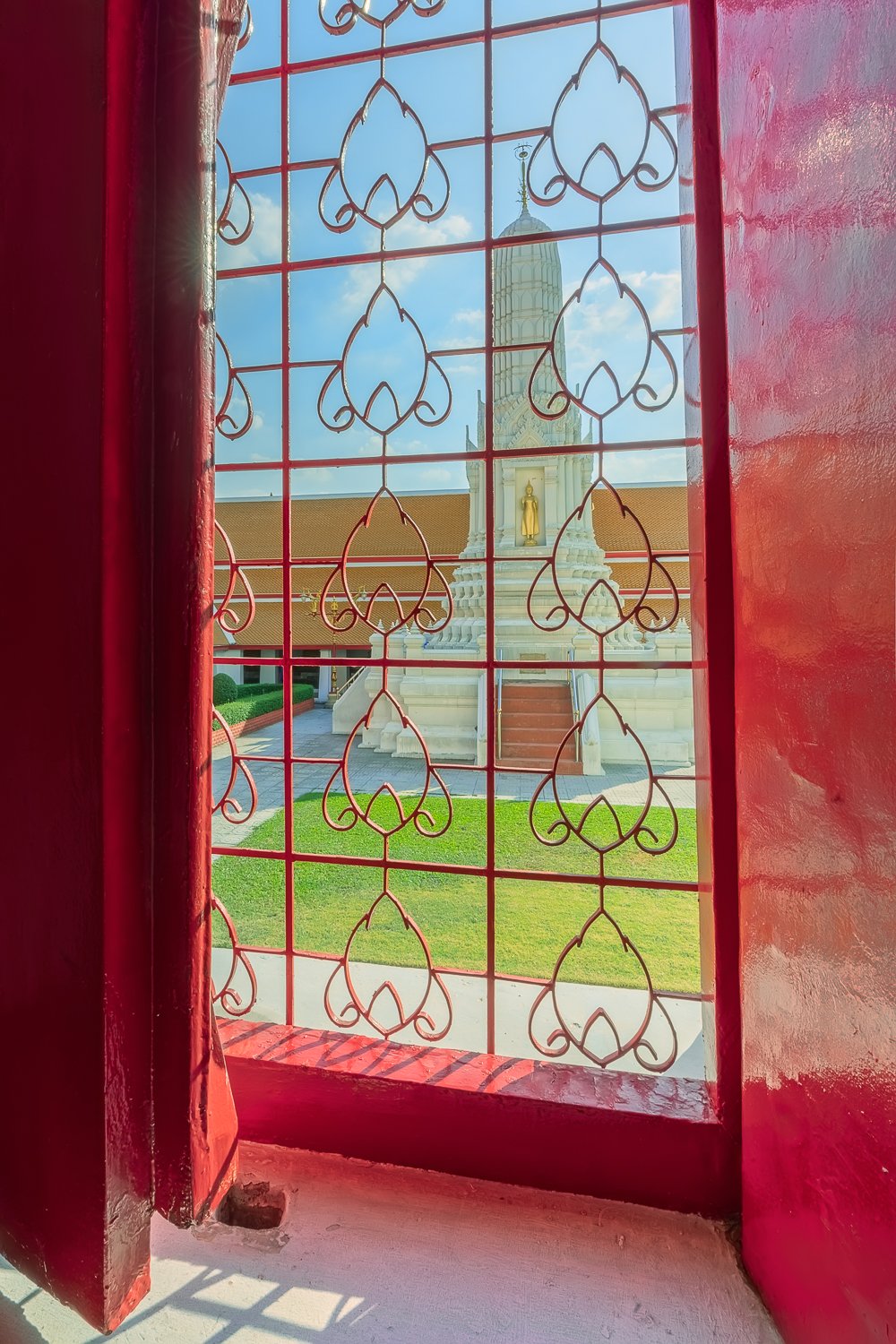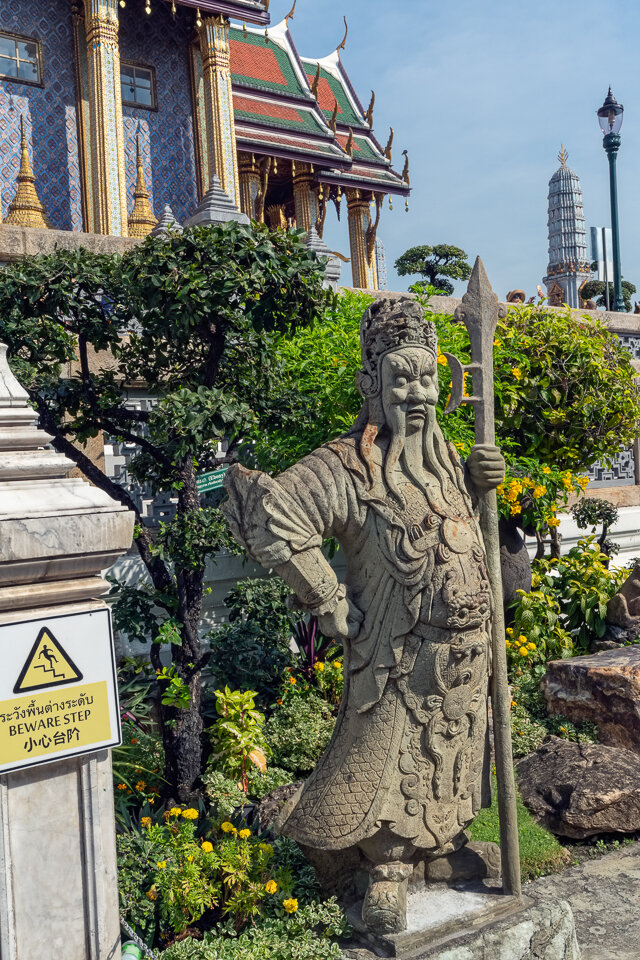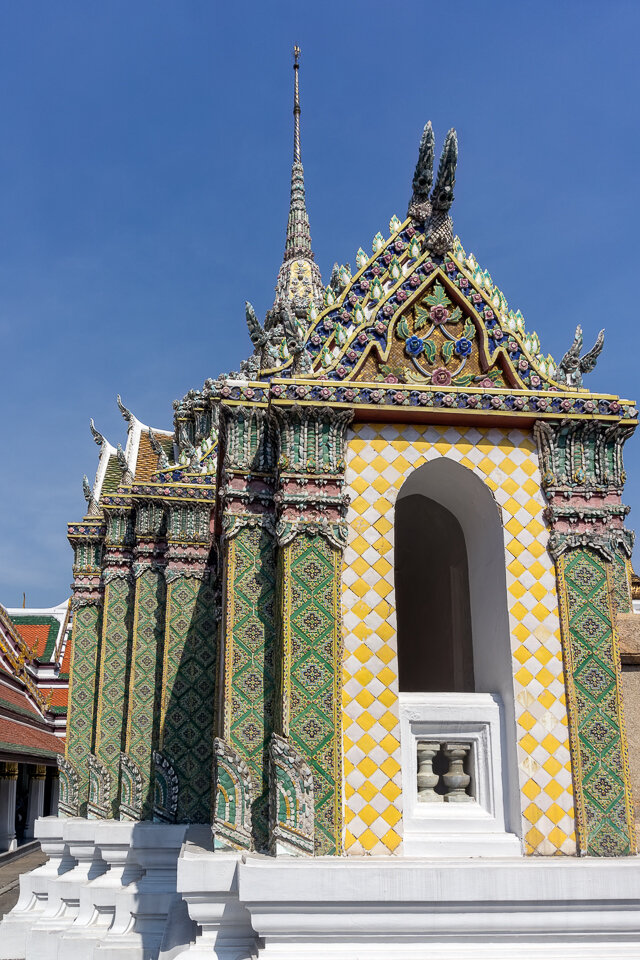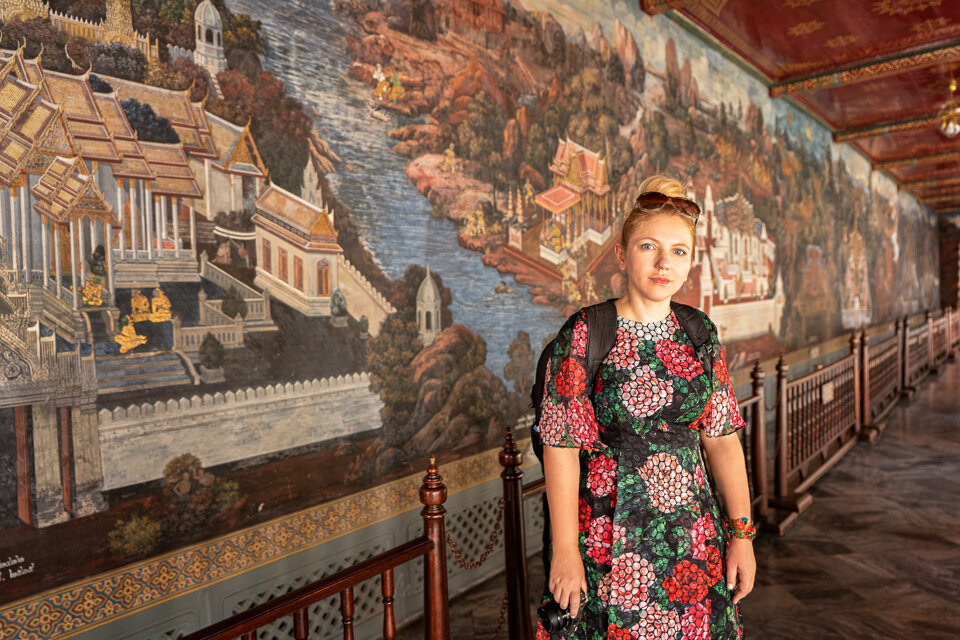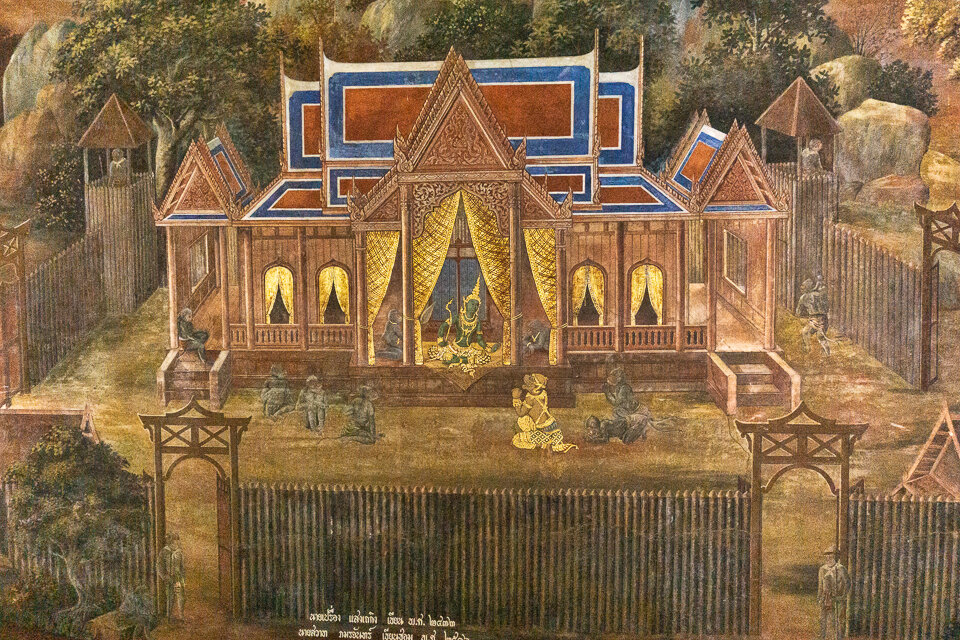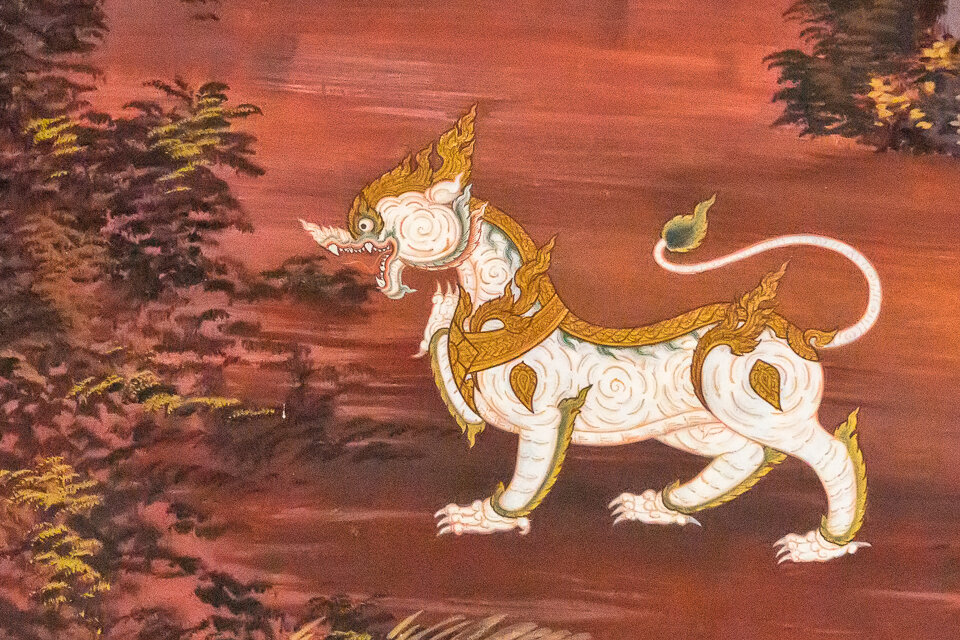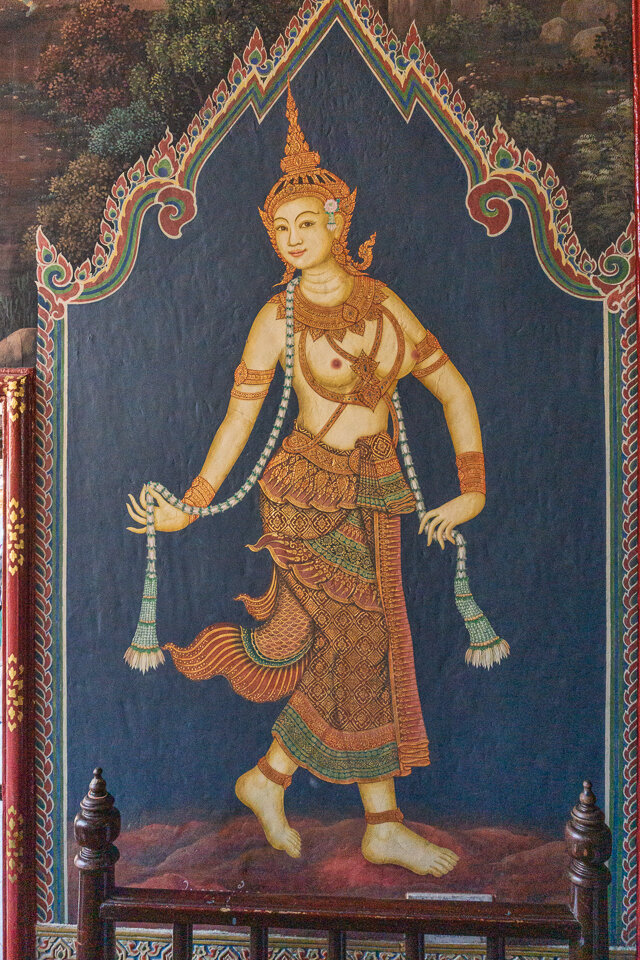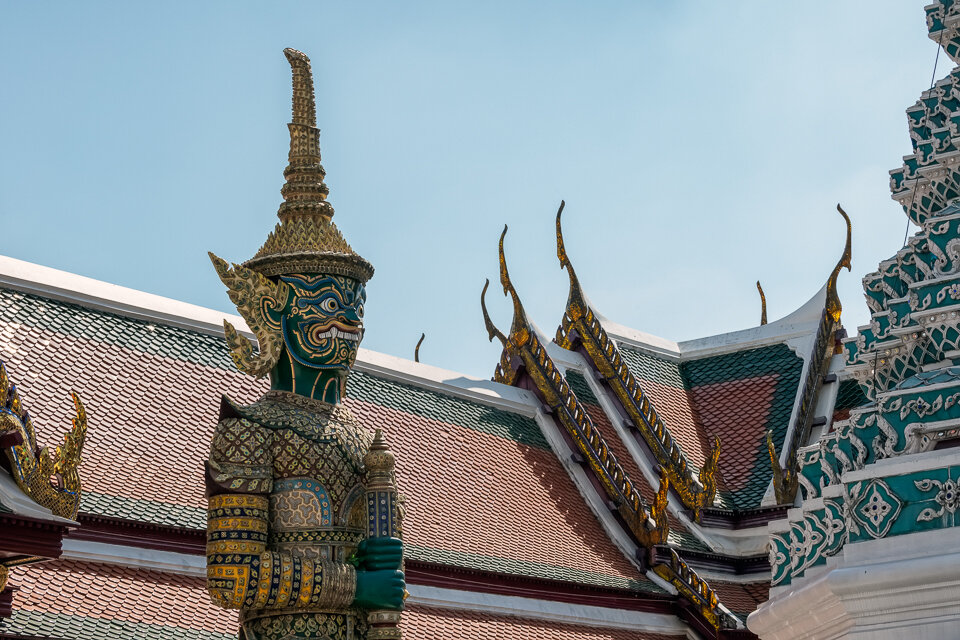After lunch, we head to another great temple, but one usually not visited by crowds - Wat Mahathat. It is the most important Buddhist learning centre in Thailand (some say in Southeast Asia), run by the Mahanikai monastic sect. Wat Mahathat is one of the six temples of the highest grade in Bangkok and it enshrines the relics of the Buddha (in the Mondop).
The Wat Mahathat’s bot (the most sacred building) is one of the largest in Thailand. In this building, new monks are ordained into monkhood. The temple has an impressive collection of Buddha statues, both sitting and standing. In the courtyard, a large Khmer style prang tower can be seen.
In the first image below the ordination hall is on the right, the vihara on the left and the Mondop at the back.
Po lunchu udajemy się do kolejnej ważnej świątyni, chociaż zwykle nie odwiedzanej przez tłumy – Wat Mahathat. Jest to najważniejsze centrum nauki buddyzmu w Tajlandii (niektórzy twierdzą, że w całej Azji Południowo-Wschodniej), prowadzone przez sektę klasztorną Mahanikai. Wat Mahathat jest jedną z sześciu najwyższej klasy świątyń w Bangkoku i zawiera relikwie Buddy.
Bot Wat Mahathat (najświętszy budynek) jest jednym z największych w Tajlandii. To w tym budynku nowi mnisi są wyświęcani do stanu zakonnego. Świątynia ma także imponującą kolekcję posągów Buddy, zarówno siedzących, jak i stojących. Na dziedzińcu można zobaczyć dużą wieżę prang w stylu Khmerów. Na pierwszym zdjęciu poniżej sala święceń znajduje się po prawej stronie, vihara po lewej, a Mondop z tyłu (tj. na wprost).







